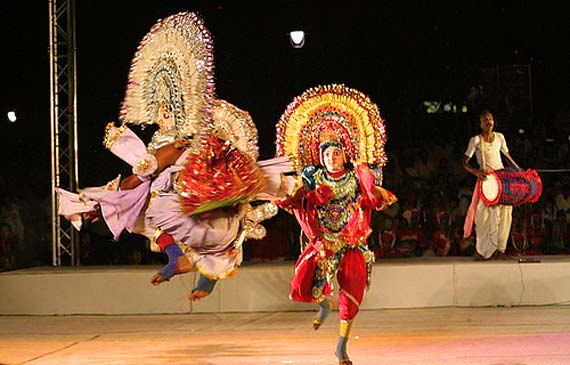One of the most
grandeur forms among Indian dances is undoubtedly the Chhau dance. EXIN IIP (Indian Institute of Professionals) which
excels in providing formal education in professional courses like ‘Performing
Arts’, brings for you the history of this splendid dance form.

The literal meaning of
the word is debated, but mostly it is thought to be one among these two – according
to Sanskrit language, the word Chhau is
derived from the word Chaya (shadow,
image or mask), but according to Indian poet and literary critic Sitakant Mahapatra, it is derived from Chhauni (Military camp).
There are three
subgenres of the dance, based on its places of origin and development, Seraikella Chhau, Mayurbhanj Chhau and Purulia
Chhau. The Chhau dance is mainly
performed during regional festivals, especially the spring festival of Chaitra Parva
which lasts for 13 days and in which the whole community participates. The Chhau blends together forms of both
dance and martial practices employing mock combat techniques (khel), stylized gaits of birds and
animals (chalis and topkas) and movements based on the
chores of village housewives (called uflis).The
Chhau dance is mainly performed by
the Munda, Mahato, Kalindi, Pattnaik, Samal,
Daroga, Mohanty,
Acharya, Bhol, Kar, Dubey, and Sahoo communities.
Masks form an integral
part of Chhau Dance in Purulia and
Seraikella where the craft of mask-making is undertaken by communities of
traditional painters known as Maharanas, Mohapatras and
Sutradhars. The knowledge of dance, music and mask-making is transmitted orally.

In 2010, the Chhau dance was inscribed in the UNESCO Representative List of the Intangible Cultural Heritage of Humanity.
No comments:
Post a Comment